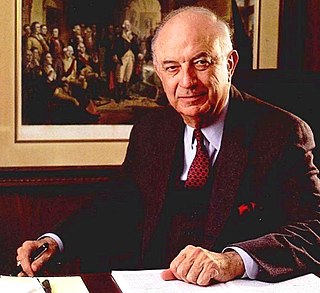Related Research Articles

Trieste is a city and seaport in northeastern Italy. It is the capital city, and largest city, of the autonomous region of Friuli Venezia Giulia, one of two autonomous regions which are not subdivided into provinces.

Sursum Corda is a small neighborhood located in Washington, D.C., bounded by North Capitol Street on the east, K Street NW to the south, New Jersey Avenue NW to the west, and New York Avenue NW to the north.

The Chigi Palace is a palace and former noble residence in Rome which is the seat of the Council of Ministers and the official residence of the Prime Minister of Italy. Since 22 October 2022, the tenant of the Chigi Palace has been Prime Minister Giorgia Meloni. It is located in the Piazza Colonna, next to Palazzo Montecitorio, seat of the Chamber of Deputies.
Leo Negrelli, born in Trieste, died in Spain in 1974.
Raffaello Baldini was an Italian writer and poet. His Ad nòta (1995) won the Premio Bagutta.

Giuseppe Cobolli Gigli was an Italian politician, member of Benito Mussolini's fascist government from 1935 to 1939 as minister of Public Works.

Giovanni Host-Venturi, also known as "Nino" Host-Venturi was an Italian fascist politician and historian.

In 1918–1920, a series of violent fights took place in the city of Split between Croats and Italians, culminating in a struggle on 11 July 1920 that resulted in the deaths of Captain Tommaso Gulli of the Italian protected cruiser Puglia, Croat civilian Matej Miš, and Italian sailor Aldo Rossi. The incidents were the cause of the destruction in Trieste of the Slovenian Cultural Centre by Italian Fascists.
Sergio Zanni is an Italian painter and sculptor. After obtaining the Diploma at the Institute of Arts 'Dosso Dossi' in Ferrara, Italy, he graduated from the Academy of Arts in Bologna. He taught in the Institute of Arts 'Dosso Dossi' until 1995. For his research in sculpturing he utilized backed clay and, successively, lighter material for sculptures of large dimensions.

Eugene L. Stewart was an American lawyer and founder of the law firm Stewart and Stewart, an international law firm based in Washington D.C. He was known for his work in international trade law. He was the recipient of numerous awards including the John Carroll Award, an award given to Georgetown University Alumni whose achievements exemplify the ideals and traditions of the university. He is credited with being the leading organizer and founder of the Sursum Corda Cooperative in Washington D.C. and was also a former law professor at Georgetown University.
Nino Valeri was an Italian historian.

The Brigate Garibaldi or Garibaldi Brigades were partisan units aligned with the Italian Communist Party active in the armed resistance against both German and Italian fascist forces during World War II.

Giovanni-Alessandro Goracuchi was a scientist, doctor and diplomat in 19th-century Austrian Istria. He was born to a Catholic Albanian family. His published works are mostly written in Italian but also in French, German and other languages. He frequently sailed as a ship's surgeon in various journeys and expeditions. Goracuchi was also involved in the political affairs of Ottoman Shkodra as a representative of Austria-Hungary. He was knighted by Austria-Hungary and became known as Rittern von Goracuchi or in Italian Cavaliere de Goracuchi.

Piazza Venezia is one of the best known squares of Trieste, the capital of Friuli Venezia Giulia, Italy. The square has a view over the Adriatic to the Alps with the Dolomite Mountains Civetta, Monte Pelmo and Antelao. The square is known for its central monument and its prominent buildings and their features: the Revoltella Palace designed by Friedrich Hitzig, with its furnishings and art collection, today including over 350 pieces, the historic Mizzan pharmacy, still conserving the original furnishing, with carved boiserie and fire-worked stained glass windows with mythological images, and the monument of Maximilian I of Mexico, the work of sculptor Johannes Schilling. The square is connected to via Torino, often credited as the center of Trieste's nightlife.

Alice Galimberti was an Italian poet, scholar of English literature, and art historian. She was a winner of the British Academy's Rose Mary Crawshay Prize in 1927 for her study of Swinburne.

Antonio De Berti was an Italian politician, deputy, and irredentist.

Filippo Zamboni was an Italian poet and writer.

Vincenzo Costa was an Italian Fascist politician and soldier, the last federal secretary of the Fascist Party of Milan.
Carlo Stuparich was an Italian writer, patriot and war hero. His one substantive work was published only posthumously, on the intitiative of his elder brother, Giovanni “Giani” Stuparich (1891-1961), another notable author. Admirers believe that, had he lived for longer, Carlo would have been remembered as the more accomplished and more original writer of the two. On 30 May 1916 Carlo Stuparich and the platoon he led, having become cut-off near Fort Corbin in the aftermath of a general retreat order some days earlier from higher up the chain of command, found themselves surrounded, outnumbered and overwhelmingly outgunned by the Austrian army under the command of Field Marshal von Hötzendorf. After a failed counter-attack in which his platoon had been wiped out, Carlo Stuparich committed suicide in order to avoid capture by the enemy.

The Corpo Volontari della Libertà was the unified command structure of the Italian Resistance during the Second World War, recognized both by the Allies and the "southern" Italian governments.
References
- ↑ Catia Papa, Goliardia e militanza patriottica. L'associazionismo studentesco in età liberale, pp. 43-60, Memoria e Ricerca 25 n. s., maggio-agosto 2007
- ↑ G. Host-Venturi, L'impresa fiumana, Roma, Volpe, 1976, pp. 25-27
- ↑ Wörsdörfer, Rolf (2004). Rolf Wörsdörfer Krisenherd Adria 1915-1955;. ISBN 9783506701442 . Retrieved 2009-07-10.
- ↑ Nella notte del 12 settembre 50 volontari della "Sursum corda" ben armati con 15 ufficiali al comando del cap. Leo Negrelli passarono la barra di Cantrida, in CHIURCO GIORGIO ALBERTO, Storia della rivoluzione fascista 1919-1922, I vol, Firenze, Vallecchi, 1929.